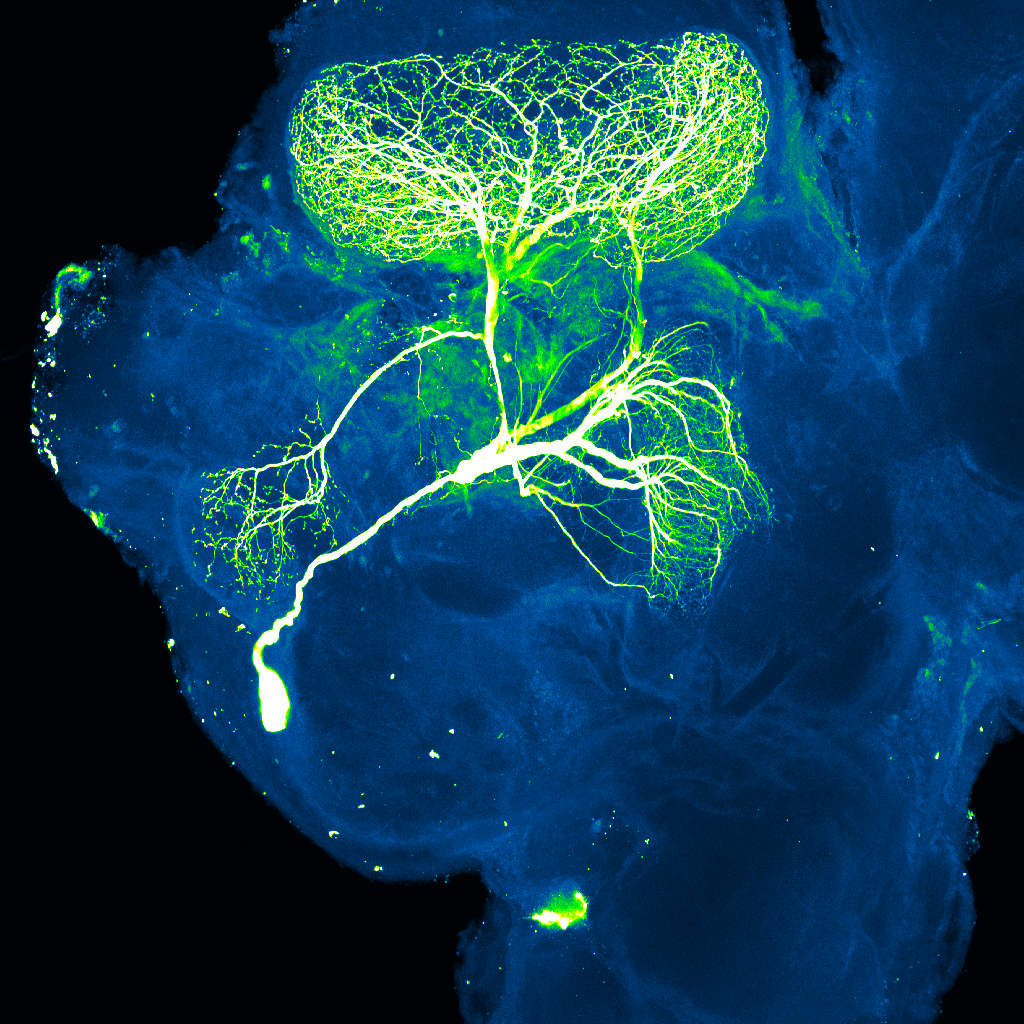GCSE Biology - AQA
1.2.3 - Nerve Cells
Jump to:
Nerve Cells
The function of a nerve cell is to transmit electrical impulses in order to carry information around the body.
Nerve cells have many structural adaptations that allow them to carry out this function.

Microscope image of a nerve cell in an insect's brain. The nerve cell has been stained green. The blue shape behind it is the brain.
The structure of a nerve cell
A diagram of a nerve cell is shown below:

A nerve cell
The part of a nerve cell that contains the nucleus is called the cell body.
Coming off from the cell body there are many thin, branching structures called dendrites.
Also coming off from the cell body is a long, thin structure called the axon.
There is a fatty structure called the myelin sheath wrapped around the axon.
The end of the axon is split into endings called axon terminals.
How a nerve cell is adapted for its function
A nerve cell is adapted for its function in the following ways:
- The dendrites connect to other nerve cells, which they receive electrical impulses from. The many dendrites allow the nerve cell to receive information from many other nerve cells.
- The axon carries electrical impulses away from the cell body. Because the axon is very long, it allows the nerve cell to transmit information over long distances within the body.
- The myelin sheath insulates the axon, speeding up the transmission of electrical impulses.
- The axon terminals allow the nerve cell to transmit electrical impulses to other nerve cells or to muscles.
Flashcards
Flashcards help you memorise information quickly. Copy each question onto its own flashcard and then write the answer on the other side. Testing yourself on these regularly will enable you to learn much more quickly than just reading and making notes.
1/6
What is the function of a nerve cell?
2/6
What is the structure of a nerve cell?
3/6
How do the dendrites enable a nerve cell to carry out its function?
4/6
How does the axon enable a nerve cell to carry out its function?
5/6
How does the myelin sheath enable a nerve cell to carry out its function?
6/6
How do the axon terminals enable a nerve cell to carry out its function?
Donate
Please consider donating to support Mooramo. I am one person doing this whole project on my own - including building the site, writing the content, creating illustrations and making revision resources. By making a one-time or repeating donation you will buy me time to work on Mooramo, meaning that I can get new content on here more quickly.
Donate